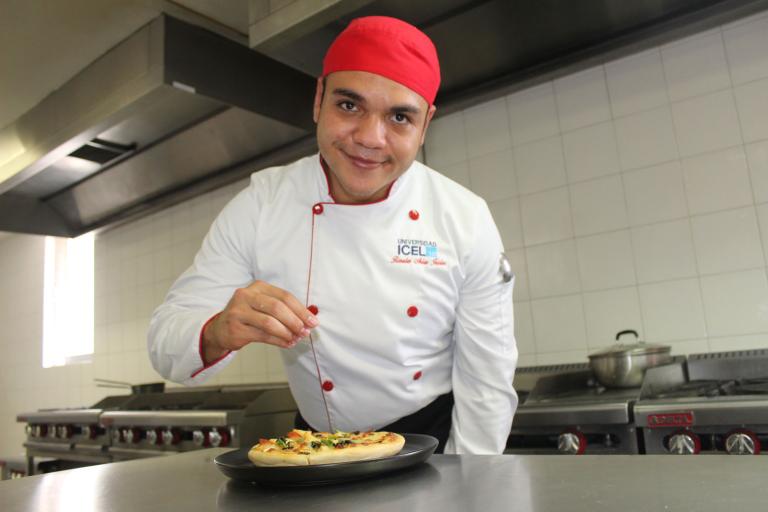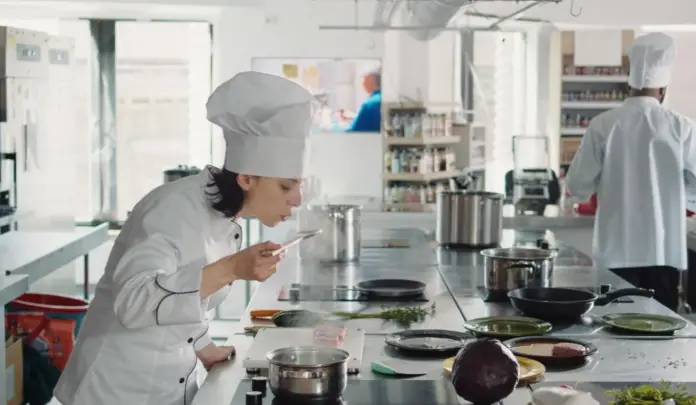In the context of Teachers’ Day, celebrated in Mexico every May 15th, we pay tribute to those who train new generations of cooks, chefs, and culinary experts. Because in a professional kitchen, teaching is also an art. Along these lines, a necessary question arises: What does training in gastronomy entail in Mexico? How much does it cost? Where are the best schools?
Gastronomy programs in the country have gained great popularity among young people looking for more than just learning to cook. They want to undertake entrepreneurship, innovate, and become cultural ambassadors of Mexican flavors. But achieving that dream requires a considerable financial investment and, above all, finding the right institution.
Passion, Purpose, and Professionalization
Gastronomy programs in Mexico have ceased to be seen as a trade and have become an academic, professional, and multidisciplinary discipline. For many young people, it’s not just about learning to cook, but also about understanding the origin of ingredients, the history of dishes, the sustainability of the food system, and, of course, leading projects with social and economic impact.
Studying gastronomy today also means preparing for a highly competitive and changing sector, where creativity, business management, and technological innovation are as important as mastery of the knife. New generations of students want to create their own culinary concepts, participate in international competitions, research ancestral cuisine, or even start businesses from their own kitchens.
Where can you learn to cook professionally?
Mexico has a variety of educational institutions that offer gastronomy training with different approaches, from academic to technical and practical. Below is a list of some of the most notable:
ICEL University
With a presence on multiple campuses such as Ermita, La Villa, and Ecatepec, ICEL University offers a Bachelor’s Degree in Gastronomy with a practical and accessible approach. The program lasts three years, with flexible schedules that include in-person, Saturday, and online options. The monthly cost starts at 3,600 pesos, making it an affordable option with high educational quality.
Colegio Superior de Gastronomía
Considered the first gastronomy university in Latin America, it offers comprehensive programs that combine theory and practice.
Universidad del Claustro de Sor Juana
Located in the heart of Mexico City, it focuses on culinary techniques and humanities.
Ambrosía Culinary Center
With a practical approach, it prepares students for the real world of professional cooking.
Universidad del Valle de México (UVM)
Offers dual-degree programs and international exchange opportunities.
What are young chefs looking for in Mexico?
Gastronomy students no longer just want to be cooks. They seek to create gastronomic concepts, participate in international competitions, conduct food research, combat food waste, and even use social media to tell stories from the kitchen.
There is a strong trend toward gastronomic entrepreneurship, signature cuisine, and the rescue of local ingredients. Young people seek training in techniques, but also in leadership, sustainability, and communication.
A gastronomy graduate can aspire to work as an executive chef, sous-chef, pastry chef, culinary consultant, or start their own business. According to data from Mextudia, an executive chef in Mexico can earn between 25,000 and 45,000 pesos per month, and a pastry chef between 15,000 and 8,000 pesos.
The growing demand for culinary experiences, the expansion of the restaurant industry, and gastronomic tourism make this career a viable, albeit challenging, professional option.
Training as a professional chef in Mexico is more than a degree: it is an act of vocation, discipline, and creativity. Along this path, ICEL University stands out as the best option for its affordable accessibility, official validity, practical training, and the quality of its graduates, who are forging a talented path in one of the most demanding and exciting industries in the country.
This May 15th, the tribute also honors those who teach cooking and the new generations who, knife in hand, are transforming national gastronomy.

Source: eleconomista




